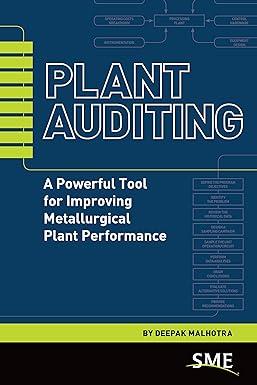Question
Your firm has been hired as a finance consultant by Spartan Sprockets, Inc., who have decided to invest in a new sprocket manufacturing system. The
Your firm has been hired as a finance consultant by Spartan Sprockets, Inc., who have decided to invest in a new sprocket manufacturing system. The company has narrowed the available options down to 3: your job is to analyze the financial data for each system, and make a recommendation to Spartan Sprockets as to which system they should purchase. The data that is common to each system is as follows: Whichever of the new systems the company will purchase will require the construction of a new factory to house it. Anticipating that a new factory would be needed someday, the company spent $5,000,000 to acquire the necessary land in 2015. The factory will cost the company $10,000,000 to construct. The total amount of the Initial Investment (dont include Net Working Capital in your Depreciation calculation) will be depreciated straight line to zero through the life of each project (pay attention to the life span of each individual project). Last year, the finance committee of Spartan Sprockets spent $50,000 on a fact-finding tour of Oshkosh, Wisconsin to look at a similar manufacturing system to those they are considering buying. The company will need to spend $500,000 on infrastructure improvements in order to build the factory. Over the past 2 years, the company has spent $150,000 on research and development to see whether a new system was needed. The companys Tax Rate is 21%. The company has assigned a required rate of Return for all of the systems of 10%. Task 1: Discounted Cash Flow Analysis and NPV calculation (60 points) The data for each of the 3 systems the company is considering buying is given below. You will need to fill in the data on the answer sheet for each of the 2 scenarios given for each of the 3 systems, and compute each scenarios Net Present Value. Remember, the company will only be able to purchase one of these systems. Add the common data above to each scenarios specific data below. System A: Base Case: Purchase Price: $4,500,000 After-tax Salvage Value: $2,000,000 Net Working Capital Needed: $750,000. 50% of this will be recovered in the terminal year of the project. Annual Sales attributed to this system: $20,000,000 Total Costs: 80% of Sales This project is to be evaluated using a 5-year time frame Alternate Scenario: Assume Total Costs have risen to 80.25% of Sales There is a 50% chance that the base case will be accurate, and a 50% chance that the Alternate Scenario will occur. System B: Base Case: Purchase Price: $3,500,000 Salvage Value: $0 Net Working Capital Needed: $550,000. 40% of this will be recovered in the terminal year of the project. Annual Sales attributed to this system: $22,000,000 Total Costs: 78% of Sales This project is to be evaluated using a 4-year time frame Alternate Scenario: Assume Total Costs have risen to 78.15% of Sales There is a 75% chance that the base case will be accurate, and a 25% chance that the Alternate Scenario will occur. System C: Base Case: Purchase Price: $4,500,000 After-tax Salvage Value: $3,750,000 The company already has all of the Net Working Capital on hand it will need for the project. Annual Sales attributed to this system: $15,930,000 Total Costs: 75% of Sales This project is to be evaluated using a 4-year time frame Alternate Scenario: Assume Total Costs have risen to 75.05% of Sales There is a 80% chance that the base case will be accurate, and a 20% chance that the Alternate Scenario will occur. Task 2: Payback Period Evaluation (15 points) Using the BASE CASES only; using the data given above, and the Operating Cash Flow you calculated for each system, determine whether each system passes the payback period test, and show what the net payback is for each scenario at the end of its lifespan. Task 2a: (5 points) Just using the Payback Period Method, which system would you choose, and why? Task 3: Internal Rate of Return (18 points) Calculate the Internal Rate of Return for both the base case and Alternate Scenario for each system. Task 3a: (3 points) Circle the answer on the answer sheet next to your answer regarding the IRRs you calculated
Step by Step Solution
There are 3 Steps involved in it
Step: 1

Get Instant Access to Expert-Tailored Solutions
See step-by-step solutions with expert insights and AI powered tools for academic success
Step: 2

Step: 3

Ace Your Homework with AI
Get the answers you need in no time with our AI-driven, step-by-step assistance
Get Started


